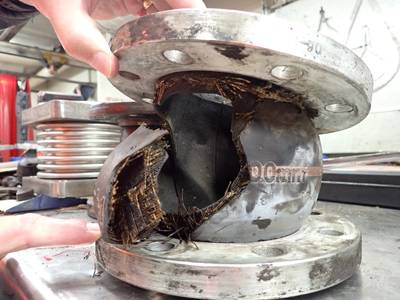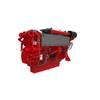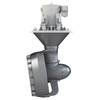Old Expansion Joints Caused Power Loss on Ferry
New Zealand’s Transport Accident Investigation Commission (TAIC) has released a preliminary report into the loss of power that occurred on the passenger ferry Kaitaki in the Cook Strait on January 28, 2023. The report concludes that maintenance for safety critical rubber expansion joints should account for date of manufacture as well as time in service.
On January 28, the crew were conducting maintenance when the shaft generator tripped and the vessel lost all electrical and propulsive power. The vessel's main and auxiliary engines all used the one high temperature cooling water system.
A rubber expansion joint (REJ) in the cooling system ruptured and most of the cooling water drained out before the crew could stop it. All power plants apart from the electricity generator shut down. It took the crew about an hour to make repairs and re-start the engines.
The rigid pipes of Kaitaki's engine cooling system included 12 rubber expansion joints to reduce vibration and noise; compensate for heat expansion, load stress and pumping surges; allow for misalignment of pipes; and make inspections easier.
Over time, as is common with manufactured rubber components, REJs become more susceptible to cracking, delamination, and can become softer or “gummy”.
These REJs were safety-critical components for the main engine cooling water system, which in turn was vital for the engine and for propulsion. Any shutdown of the cooling system would trigger immediate shutdown of the engine to prevent catastrophic failure.
The manufacturer of the REJs says they should be no older than eight months when installed, should be inspected annually and replaced after five years.
But the Kaitaki's ruptured REJ was 13 years old when installed in 2018 and 18 years old by the time it ruptured. It failed because it had been in service for longer than the manufacturer's recommended serviceable period.
Under KiwiRail's own system, the REJ was two months overdue for replacement. However, since the incident, KiwiRail has updated its guidance for REJs, but it still doesn’t comply with the manufacturer’s guidance and doesn't account for the date of manufacture, says TAIC.
The Commission has made two recommendations to Maritime New Zealand:
Require KiwiRail to provide evidence to Maritime NZ’s satisfaction that safety-critical rubber expansion joints onboard all vessels within KiwiRail’s Interislander fleet are fit for purpose taking into account the manufacturer’s guidance.
Alert all vessel operators using rubber expansion joints within a vessel’s safety critical system of the importance of taking into account the date of manufacture in addition to the time in service, in their maintenance schedules.
TAIC's inquiry into the Kaitaki incident is continuing, with current lines of inquiry that include maintenance, safety systems, emergency response and emergency capability. A final report, setting out findings, safety issues and recommendations, if any, will be issued at a later date.














